Lessons from Across the Pond

A blog post by Executive Director Marvin Pinkert. To read more posts by Marvin, click here.
Over the Passover holiday I traveled to England, meeting up with my wife, who took a vacation from her dissertation research in Turkey. I am normally quite reticent to share tales of my journeys, probably due to being subjected to one-too-many travelogues from my myriad aunts and uncles. But Rachel has persuaded me that a few of my observations/adventures might be of more general interest.
1. One Site, Many Dimensions
My favorite site on the whole trip was Hampton Court Palace. It is the home that King Henry VIII took off the hands of Cardinal Wolsey after he sent him to the Tower. It continued to be “improved” by English monarchs up through the mid-1700s.
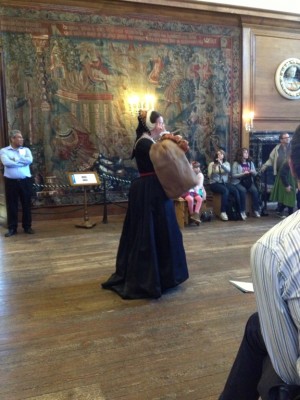
The custodians of this site showed tremendous imagination in interpretation. They created separate tours for different time periods and though Henry VIII may be somewhat better known than George II, they managed to find attributes (like chocolate making) that evened the field. They broke common museum labeling conventions, often pinning labels to tapestries or draping them on tables rather than pasting them on foam core. It made the experience much more organic. They also managed to use a wide variety of techniques simultaneously, including living history performances, audio guides and high-tech slide presentations. I thought that the combination of techniques, great history to work with and truly beautiful paintings and gardens made this a historic site with very wide appeal… proving that sometimes More is More (and I don’t just mean Sir Thomas).
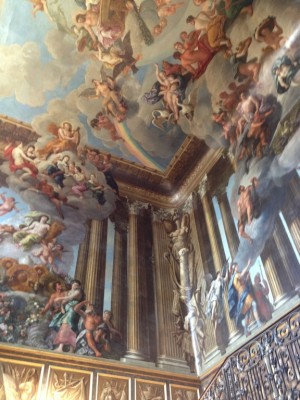
On the long bus ride out to the Palace we passed by a field with the targets set up for what appeared to be a professional archery tournament. Wish I had taken a picture, especially after we passed by the scoreboard which identified the teams as London Welsh vs. Nottingham!! Did I really lose my chance to meet Robin Hood?
2. Like No Other Night
When we decided that we’d meet over Passover, I thought I would try to find an interesting Second Night Seder. I e-mailed Michael Leventhal, who runs the annual Gefiltefest in London, to ask for a recommendation. He connected me to a group called the Carlebach Minyan which was holding its seder at a private home in the North London borough of Finchley. Much of the ceremony was reminiscent of seders I’ve had here in Maryland or Illinois (with the exception of a Sephardic custom of lashing your neighbors with scallions during the singing of Dayenu). But the dinner had an exceptional theme – “Eat Your Way Through the Plagues”. The dinner had ten courses each course took its inspiration from the plague. For course one, for example, each guest was given a plastic syringe, a thimble of tomato juice and a thimble of vodka or water – and it was our task to “turn the clear liquid of the Nile into blood”. Course five, beasts, was brisket and potatoes but the potatoes had been dried to form a rampaging hippo as seen in this photo. When we got to course eight, the host came in to proudly inform us that locusts were kosher and that this course was exactly what it sounded like. Here I drew the line – I am not a grasshopper eater.
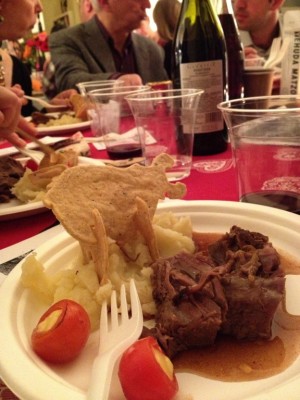
During the seder I was invited to share a story… I shared the tale of the Lloyd Street Synagogue’s own “wicked son” – Rabbi Illowy and the lessons we learned from America’s Civil War.
3. Expectations and Audience
I did take the opportunity to visit the Jewish Museum of London. It is a little challenging to find, but worth the effort. We have some elements in common with our London counterpart, including the exhibition of one of the oldest mikveh in our respective countries (well, ours is 1845 and theirs is mid-13th century).

The Jewish Museum of London has three exhibit floors. The first level is “what is Judaism?”… objects that explain Jewish rituals and observances. The second level is “the history of Judaism in Britain” and the third level is a changing exhibit gallery. I found it interesting that such a large portion of the total footprint was dedicated to explaining Judaism in general. It seemed to reflect an expectation that a significant portion of their audience was unfamiliar with Jewish practice… an expectation not often reflected in American Jewish museums.
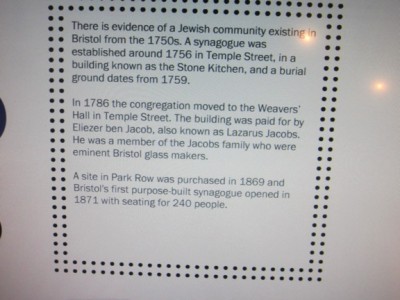
On the second floor there were some interesting display concepts. The tailor shop section of the exhibit included tools partially encased in plexi – visitors could lift the iron or the scissors and feel their weight without risk of injury from sharp edges. There was also a video that blended a historic photo with live actors. The interactive that allowed you to look up dozens of communities in England and find out their Jewish stories was particularly well done. I wouldn’t be surprised if someday you could do this with towns of Maryland at a certain museum in Baltimore.
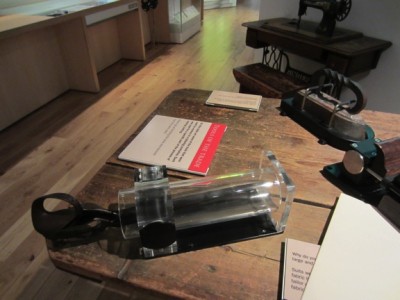
The temporary exhibit in April was on Jewish participation in World War I. I thought it was an excellent treatment of a difficult topic. Naturally, the focus was on the Jews of Britain – but they did a credible job of explaining the participation of the much larger populations of Jews who fought for the Central Powers (Germany and Austria).
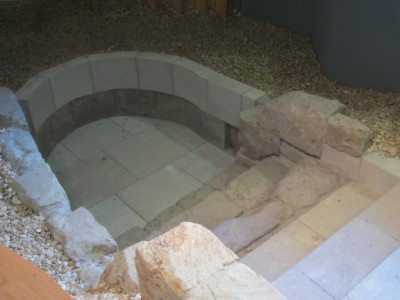
4. York and Memory
We ended our visit to England with a trip to York, a beautiful, walkable small city in the north of the country. It has an incredibly rich history… underneath the soaring Gothic York Minster lie the remains of the original Roman fort at Eboracum. There is also a slightly hokey attraction focused on York’s Viking heritage in town.
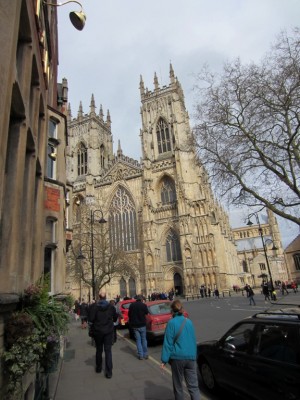
York plays a role in Jewish history as well, though not a happy one. It seems that when Richard the Lionheart ascended to the throne in 1189 a rumor spread that it was the king’s wish to deal with infidels at home before heading on a Crusade against infidels abroad. The small Jewish community of York, numbering about 150, fled the castle keep (a place later reconstructed in stone as Clifford’s Tower). A mob descended on the keep and the Jews inside made the decision to kill themselves by burning down the keep rather than expose themselves to torture, forced conversion and/or death from the mob.
Memories of York were still fresh in my mind when I boarded the plane back to the US. I had bought myself a wonderfully illustrated magazine for the long trip home – The Medieval World, published by National Geographic. Its 127 pages of text and graphics attempted to summarize the major places and events of the thousand year span from 400 to 1400 A.D. Not surprisingly, York made it into the list of great places of the age. The magazine attempted to give a balanced portrayal of the struggle between Christians and Muslims across this millennium. But somewhere over the North Atlantic, I began to notice something was missing: the Jews. Not just missing from the sidebar on York, but from the discussion of Moorish Spain and central Germany… as best as I could tell, missing from all 127 pages!
What struck me was how easy it is to erase a people from history… and how important it is that institutions like the Jewish Museum of London (and the Jewish Museum of Maryland) keep it alive and accessible to the public. I came back from my journey, exhausted, refreshed and ready to go back to work.
